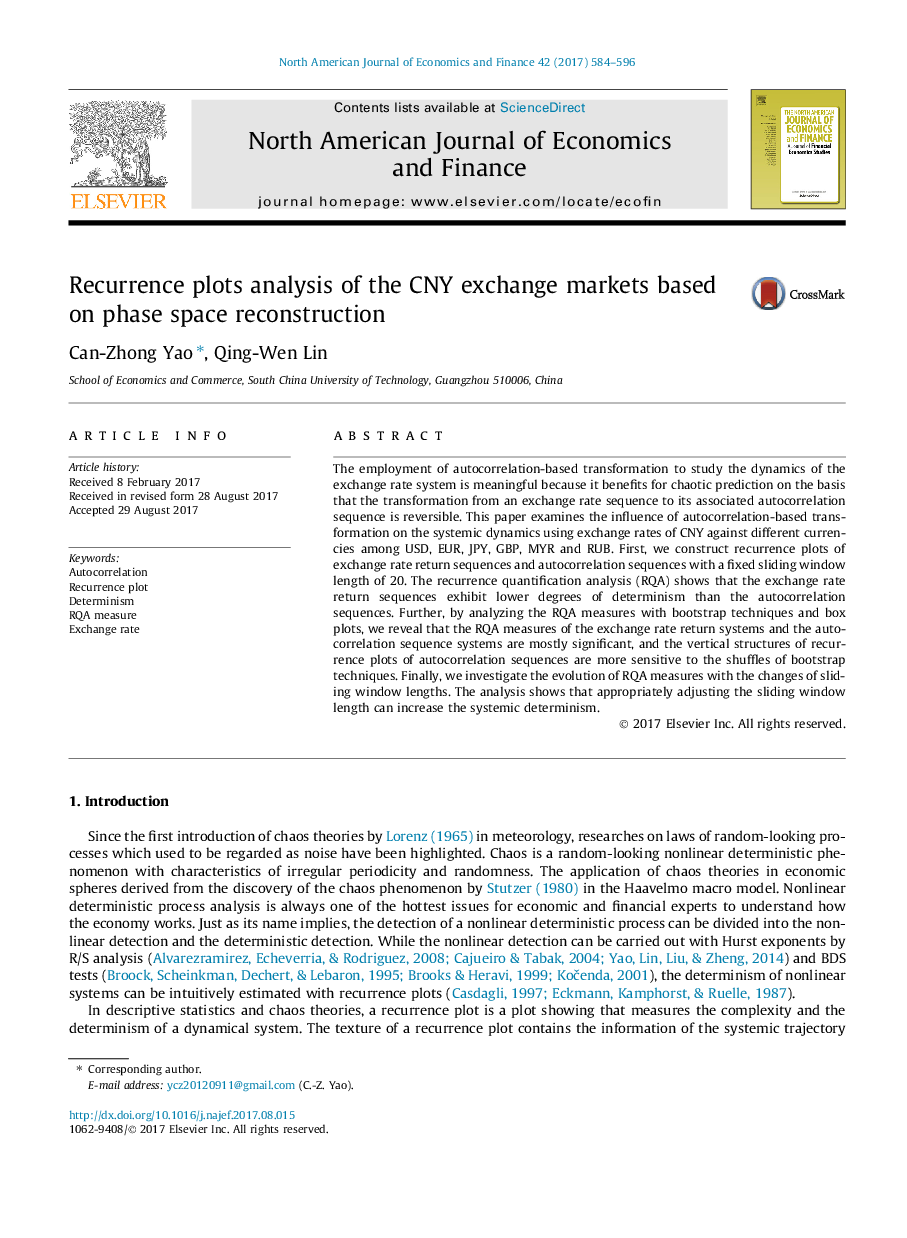| Article ID | Journal | Published Year | Pages | File Type |
|---|---|---|---|---|
| 5102204 | The North American Journal of Economics and Finance | 2017 | 13 Pages |
Abstract
The employment of autocorrelation-based transformation to study the dynamics of the exchange rate system is meaningful because it benefits for chaotic prediction on the basis that the transformation from an exchange rate sequence to its associated autocorrelation sequence is reversible. This paper examines the influence of autocorrelation-based transformation on the systemic dynamics using exchange rates of CNY against different currencies among USD, EUR, JPY, GBP, MYR and RUB. First, we construct recurrence plots of exchange rate return sequences and autocorrelation sequences with a fixed sliding window length of 20. The recurrence quantification analysis (RQA) shows that the exchange rate return sequences exhibit lower degrees of determinism than the autocorrelation sequences. Further, by analyzing the RQA measures with bootstrap techniques and box plots, we reveal that the RQA measures of the exchange rate return systems and the autocorrelation sequence systems are mostly significant, and the vertical structures of recurrence plots of autocorrelation sequences are more sensitive to the shuffles of bootstrap techniques. Finally, we investigate the evolution of RQA measures with the changes of sliding window lengths. The analysis shows that appropriately adjusting the sliding window length can increase the systemic determinism.
Related Topics
Social Sciences and Humanities
Economics, Econometrics and Finance
Economics and Econometrics
Authors
Can-Zhong Yao, Qing-Wen Lin,
